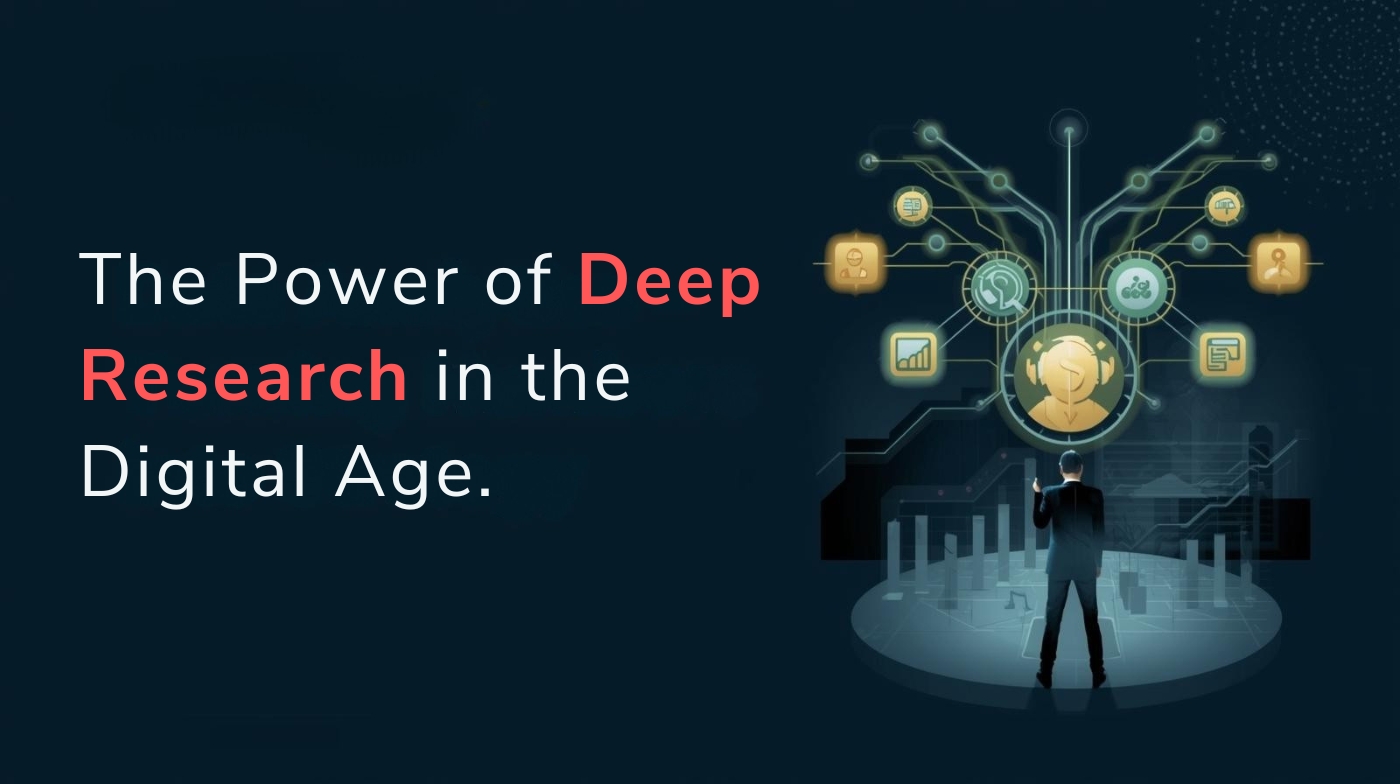The Power of Deep Research in the Digital Age

Introduction
We live in an era where information is everywhere—news feeds, social media, online databases, and AI-driven platforms. But abundance doesn’t always mean accuracy. In fact, one of the biggest challenges of the digital age is separating truth from noise. This is where deep research steps in. Unlike surface-level fact-checking, deep research goes further: cross-verifying multiple sources, diving into data, analyzing trends, and extracting insights that are both reliable and actionable.
In this blog, we’ll explore what deep research is, why it’s crucial in today’s fast-paced environment, how to conduct it effectively, and how it fuels both academic and business success.
What is Deep Research?
Deep research is a systematic and detailed process of gathering, analyzing, and interpreting information with accuracy and depth. It doesn’t stop at the first page of Google search results. Instead, it involves:
- Reviewing academic journals, white papers, and industry reports.
- Using multiple perspectives and sources to avoid bias.
- Looking for patterns, correlations, and outliers in large datasets.
- Leveraging tools like AI, data analytics, and visualization platforms.
Deep research seeks to answer not just what is happening, but why it’s happening, and what it means for the future.
Why Deep Research Matters in the Digital Age
- Information Overload: With billions of pages indexed online, misinformation spreads quickly. Deep research helps cut through the clutter.
- Better Decision-Making: Businesses can identify market opportunities, students can strengthen academic work, and policymakers can shape effective strategies.
- Credibility and Trust: Whether publishing a blog, a report, or a thesis, citing well-researched facts builds authority.
- Competitive Advantage: Companies that rely on deep research understand customer needs better, forecast trends more accurately, and outpace competitors.
Real-World Applications of Deep Research
- Business: Startups use deep research to validate new product ideas and find underserved markets. Corporates leverage it for competitor analysis and long-term strategy.
- Healthcare: Researchers dive into medical journals and patient data to discover new treatment methods.
- Education: Students conducting theses or dissertations rely heavily on deep research to strengthen their arguments.
- Technology: Developers and innovators study trends, patents, and emerging frameworks to predict the next big shift.
Tools and Techniques for Deep Research
- Academic Databases: Platforms like JSTOR, Google Scholar, and PubMed.
- AI-Powered Tools: ChatGPT and similar AI tools can summarize papers, highlight themes, and generate research outlines.
- Data Analytics Platforms: Tableau, Power BI, and Python libraries for exploring patterns.
- Cross-Referencing: Fact-checking across independent, credible sources.
- Interviews & Surveys: Collecting primary data for insights beyond published materials.
Case Study: Netflix’s Success Through Deep Research
Netflix didn’t become the world’s leading streaming platform by luck. Their success is rooted in deep research and data analytics. They studied not just what people watched, but how long they watched, when they paused, and which genres kept them hooked. By cross-referencing audience behavior with global media trends, Netflix made strategic investments in original content like House of Cards and Stranger Things. The outcome? Billions in revenue and an entirely reshaped entertainment industry.
Challenges in Deep Research
- Bias: Researchers may unintentionally seek information that confirms their existing beliefs.
- Information Reliability: Not all published data is accurate.
- Time and Resource Intensive: Deep research takes significant effort compared to surface-level searching.
- Ethical Concerns: Privacy, data misuse, and misinformation are real risks.
Best Practices for Effective Deep Research
- Define Your Research Question Clearly: Vague questions lead to vague results.
- Use Multiple Sources: Never rely on a single platform or dataset.
- Document Your Process: Keep track of where you sourced information.
- Stay Updated: Research is a moving target; new data constantly emerges.
- Balance Tech with Human Judgment: AI is powerful, but human intuition ensures accuracy and ethical integrity.
The Role of AI in Deep Research
Artificial Intelligence, particularly tools like ChatGPT, has transformed how we approach research. AI can:
- Summarize lengthy documents.
- Suggest additional perspectives.
- Highlight contradictions across sources.
- Speed up data cleaning and organization.
But AI is not a replacement for human researchers. The best outcomes happen when AI handles repetitive tasks, while humans focus on critical analysis and strategic interpretation.
FAQs on Deep Research
Q1: How is deep research different from regular research?
Deep research goes beyond surface-level information, diving into multiple verified sources and analyzing patterns to gain insights.
Q2: Can AI replace deep research?
No. AI is a support tool. It accelerates the process but human judgment and creativity remain essential.
Q3: How long does deep research take?
It varies depending on the subject, but it typically requires significantly more time than casual fact-finding.
Conclusion
Deep research is not a luxury—it’s a necessity in the digital age. With information overload, fake news, and rapid technological shifts, the ability to conduct reliable and thorough research is what separates leaders from followers. Whether you’re a student, entrepreneur, analyst, or policymaker, deep research equips you with the clarity and confidence to make smarter decisions.
The takeaway? Don’t just skim the surface. Dive deeper. The answers that matter most often lie beneath.







